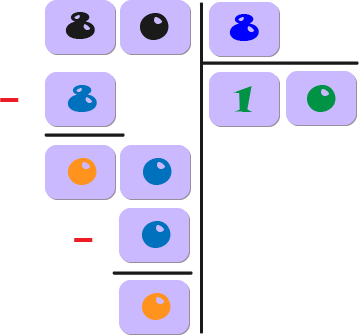Division is a way of sharing or splitting things into equal parts. It helps us find out how many times one number
fits into another or how to divide a group of items equally among people.

Division tells you how many equal groups you can make from a total amount.
Below some examples are provided for you to understand more about division.
Sometimes, when you divide, you might have some leftovers. For example,
- Imagine you have 10 cookies
- You share the cookies with 3 friends. You start by giving each friend 1 cookie.
- Each friend would get 3 cookies, leaving you with 1 cookie that doesn’t fit evenly into the groups.
- This leftover cookie is called the remainder.
- So, with division you try to create equal shares, but it doesn’t always do so perfectly, and what’s left over is a remainder.
- Imagine you're at a party with 8 of your friends. There's 1 cake at the party, and you want to share it equally with everyone.
- You want to divide the 1 whole cake equally between all 8 people. To do that, you cut the cake into smaller pieces.
- Since there are 8 people, you cut the cake into 8 equal pieces. Each person will get one piece.
- 1 whole cake ÷ 8 people = 1/8 of a cake per person. So, each person gets a piece that’s 1/8 of the whole cake.
Division is a way to split things evenly. You use it to cut the cake into smaller pieces, so each person gets the same amount!
There are multiple methods for solving long division, but we will focus on the American and European styles.
Both methods reach the same result, but they vary in how they are presented and in certain procedural details
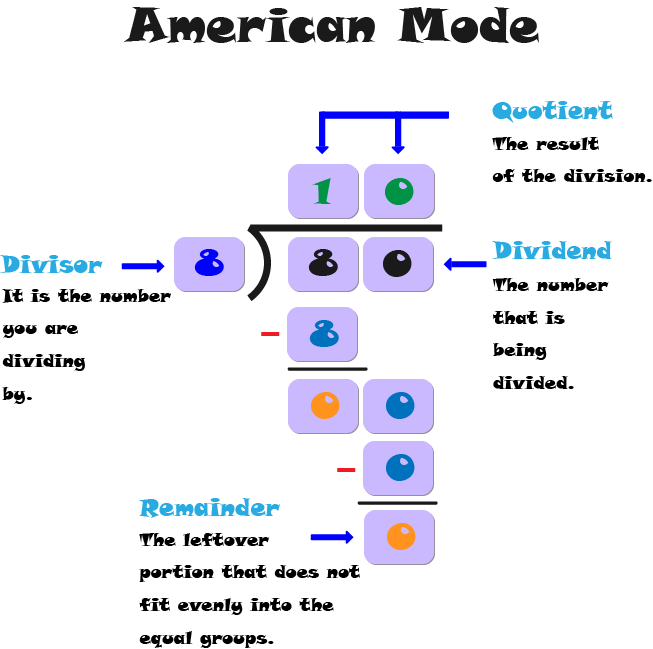

The parts of division are the divisor, the dividend and the quotient, and also the remainder.
It is the number you are dividing by.
The number that is being divided.
The result of the division.
The leftover portion that does not fit evenly into the equal groups.
Solving division problems depends on the complexity of the division. For example, when we are working with simple numbers we can simply think of division as the opposite of multiplication and use the multiplication tables to solve them.
Let's look at this example.
What is 16 divided by 8?
Or let's say try to find out how many groups of 8
you can make from 16.

The answer is 2.

Whenever you divide a number, you are essentially asking, "What number multiplied by the divisor ( 8 ) will give me the dividend ( 16 )?"

Let's divide 80 by 8

1) Look at the first part of the dividend ( 80 ).
- Determine how many times the divisor ( 8 ) fits into the first digit ( 8 ) of the dividend without exceeding it.
Or ask yourself "What number multiplied by the divisor ( 8 ) will give me the first digit of the dividend ( 8 ) without exceeding it?"
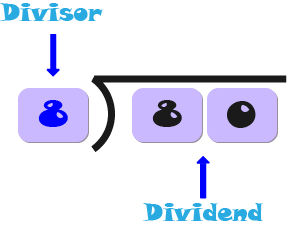
2)The number that multiplied by the divisor ( 8 ) gave me the first digit of the dividend ( 8 ) is ( 1 ) because ( 1 x 8 (divisor) = 8 (first digit of the dividend).
- Write that number ( 1 ) above the division bracket as part of the quotient.

3) Multiply the divisor ( 8 ) by the quotient ( 1 ) you just calculated.
- Write this result ( 8 x 1 = 8 ) below the digit of the dividend ( 8 ) you just worked with

4) Subtract the multiplication result ( 8 x 1 = 8 ) from the digit you were considering, in this case the first digit of the dividend ( 8 ) .
-Write the difference of ( 8 - 8 = 0 ) below.
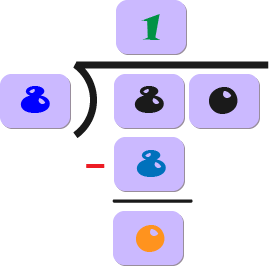
5) Bring down the next digit of the dividend ( 0 ) next to the difference you just calculated ( 0 ).
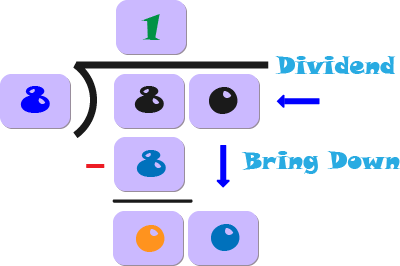
6) We repeat the process by finding what number multiplied by the divisor ( 8 )
will give the next digit of the dividend ( 0 ).
In this case ( (divisor) 8 x 0 = 0 (second digit of the dividend) ).
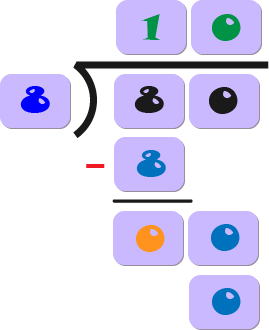
7) And then we subtract the result from the second digit of the dividend we just brought down ( 0 ), and we write the difference ( 0 - 0 = 0 ) below.

If you end up with a number smaller than the divisor ( 8 ) after the final subtraction, that number is the remainder.
Since there are no more digits to bring down and the remainder is 0, the final answer ( quotient ) is 10 .
And that is how you solve long divisions! :)
Use our training board to master the process of long division using the American and the European style.
Let's divide 80 by 8

1) Look at the first part of the dividend ( 80 ).
- Find out how many times the divisor (8) can fit into the first digit (8) of the dividend without going over. Alternatively, you can ask yourself, "What number multiplied by the divisor (8) will equal the first digit of the dividend (8) without exceeding it?"

2) The number that, when multiplied by the divisor (8), equals the first digit of the dividend (8) is (1), since (1 x 8 = 8). Place that number (1) below the division bracket as part of the quotient.

3) Multiply the divisor ( 8 ) by the quotient ( 1 ) you just calculated.
- Write the result ( 8 x 1 = 8 ) below the digit of the dividend ( 8 ) that you just worked with.
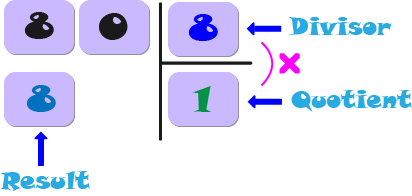
4) Subtract the multiplication result ( 8 x 1 = 8 ) from the digit you were considering, which is the first digit of the dividend ( 8 ).
-Write the difference of ( 8 - 8 = 0 ) below.
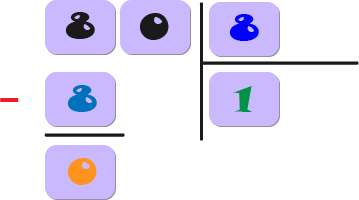
5) Bring down the next digit of the dividend ( 0 ) and place it next to the difference you just calculated ( 0 ).
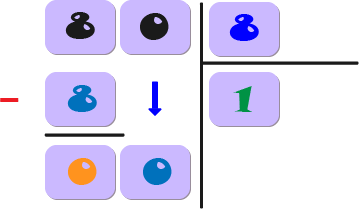
6) We repeat the process by finding what number multiplied by the divisor ( 8 ) will give the next digit of the dividend ( 0 ). In this case ( (divisor) 8 x 0 = 0 (second digit of the dividend) ).
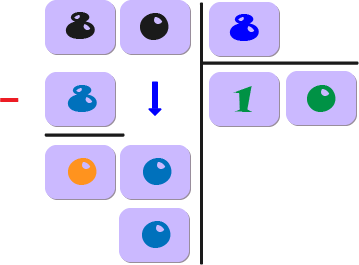
7) Next, subtract the result from the second digit of the dividend we just brought down ( 0 ), and we write the difference ( 0 - 0 = 0 ) below.
